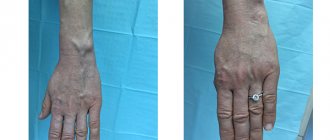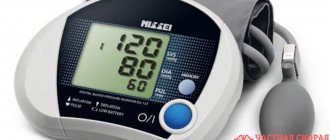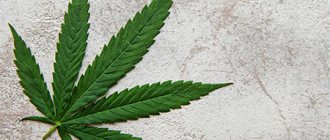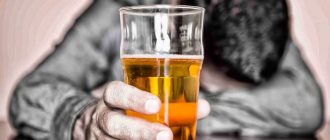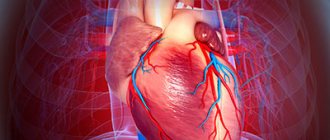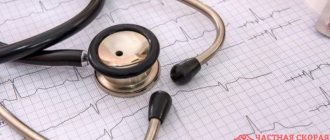Vegetovascular dystonia (hereinafter referred to as VSD) is a medical problem that almost every modern person faces. VSD “makes itself known” by disruptions in the functioning of the autonomic nervous and cardiovascular systems. So, the classic symptoms of dystonia are:
- blood pressure surges;
- insomnia;
- migraine;
- decreased ability to work;
- apathy;
- irritability.
Important: medical statistics are disappointing - at least 80% of the adult population suffers from the above signs of VSD. Some autonomic disorders are also observed in schoolchildren (in particular, during puberty, when hormonal levels are “raging”).
The prevalence of the disease leads to the fact that many patients suffering from such unpleasant manifestations are interested in the question: is it possible to drink alcohol during VSD? To answer this, it is worth understanding what vegetative-vascular dystonia is, and what changes in the body of a dystonic patient can occur as a result of drinking alcohol.
The concept of VSD
This term usually refers not to a disease, but to a complex of symptoms, the appearance of which is associated with disturbances in the functioning of internal organs. The main cause of VSD, according to doctors, is the frantic pace of modern life, hence constant stress and overwork, which “hit” the nervous system.
Signs of dystonia can also result from:
- gastrointestinal diseases;
- problems with the central nervous system;
- emotional instability;
- genetic predisposition;
- alcohol abuse, smoking and other bad habits;
- depressive states, regular stress, other forms of psycho-emotional experiences.
Attention! Neuroses are the main “triggers” that contribute to the occurrence of symptoms of VSD. Any chronic diseases only aggravate the course of dystonia, which arose due to problems with the nervous system.
Smoking and VSD: effects on the body, symptoms and causes, advice from neurologists, reviews
VSD is a disease that includes a set of symptoms indicating a malfunction of the vascular system.
In modern medicine, vegetative-vascular dystonia is considered as a combination of various symptoms, and not as a separate disease. The main feature is that its symptoms cause illness throughout the body.
Before diagnosing VSD in a patient, the doctor must rule out other dangerous diseases.
Smoking is especially dangerous for VSD. Why and what this can lead to, we will consider in the article.
A smoker should know that smoking and VSD are incompatible. Nicotine puts a strain on the cardiovascular system, which is already suffering greatly.
Where does VSD come from?
Many experts agree that dystonia is a consequence of a psycho-emotional shock. After this, the general condition of the body deteriorates, which leads to a malfunction of all organs.
How does VSD manifest and why is it dangerous?
“Victims” of dystonia regularly experience attacks of lightheadedness. These are accompanied by: pale skin, changes in heart , chest pain, painful urination. Dystonics feel cold in their extremities, become irritable, and suffer from sexual dysfunction. Patients with VSD are “haunted” by mood swings, apathy, and their body temperature may rise (low-grade fever).
Important: the “identifying” sign of dystonia is a feeling of lack of air (the cause is hyperventilation of the lungs). There are no organic prerequisites for such pathological conditions; they are a manifestation of functional (vegetative) disorders.
Attacks of VSD are always accompanied by “signals” from the blood vessels and the heart. A syndrome that is harmless at first glance, if not in a timely manner , can lead to serious disruptions in the functioning of the body:
- the appearance of regular panic attacks with a consistently reduced emotional background;
- hypoxia (oxygen starvation) and deterioration of cerebral circulation;
- atherosclerosis, hypertension, varicose veins, angina, heart attack, stroke and other pathologies of the cardiovascular system.
How smoking affects cardiovascular activity
A smoker's heart beats faster (up to 80-90 beats per minute).
Carbon monoxide, which cigarette smoke brings into the body, reduces the amount of oxygen entering organs that are very important for life. Oxygen starvation has a very negative effect on the vital resource of the heart.
Increased blood clotting. Because of this, blood clots may appear in the blood vessels and heart cavity. If the blood clot breaks, and this almost always happens suddenly, the person may experience a myocardial infarction, cerebral stroke, or pulmonary infarction.
The negative effect is also due to the high concentration of nicotine, which affects the decrease in the level of the hormone prostacyclin and damage to cell membranes. A decrease in the level of this hormone can lead to a disease that affects the smoker's heart. It will also accelerate the course of an existing disease.
Cholesterol in the blood increases, and the level of blood lipids, betaliproprotein, also increases. This contributes to the formation of atherosclerotic plaques, which prevent blood flow to the heart. The negative consequences of atherosclerosis are myocardial infarction, ischemic disease and even sudden death.
Vegetovascular dystonia and ethanol
How do the concepts of VSD and alcohol relate: it has been scientifically proven that alcoholic drinks not only aggravate the course, but also initially provoke the development of this syndrome.
Despite the fact that autonomic disorders are not fatal and do not pose a direct threat to human health, exacerbation of VSD after alcohol can cause a serious blow to the body. Doctors say that alcohol is the main “provocateur” of panic attacks and other “faithful companions” of dystonic patients. It doesn’t matter what kind of alcohol gets into the blood - beer, vodka, cognac - the well-being of the “victim” of VSD will suffer in any case. At the same time, the dystonic person cannot even get “well drunk” - a hangover in such people develops rapidly and when consuming minimal “dosages” of alcohol.
To clearly demonstrate how detrimental ethanol affects the body of a patient with autonomic disorders, it is enough to measure blood pressure and pulse immediately before and 6-7 hours after drinking alcoholic beverages.
Attention! For most dystonics, 40-50 ml of vodka or any other alcohol causes an immediate jump in blood pressure and an increase in heart rate (by 100-150%).
Alternative to cigarettes and alcohol
Even if desired, it is much more difficult for patients with VSD to get rid of nicotine or alcohol addiction than for other people. But if you gather your strength, it can be done. For example, when fighting smoking, you can try to replace cigarettes with drinks made from natural coffee beans. They also stimulate blood circulation in the brain well and have much less negative effect on the body.
Instead of alcohol, a frequently occurring nervous state can be eliminated with the help of sedative medications, available in pharmacies without prescriptions.
The combination of relaxants and tonic coffee allows you to stabilize the condition of patients with VSD and bring it back to normal. But you should understand that any medications and coffee should be taken only in reasonable amounts without abuse.
The diagnosis of vegetative-vascular dystonia is in no way combined with smoking, and especially with an addiction to alcoholic beverages. Such desires only shorten life expectancy and significantly worsen the condition of patients. But, despite this, many patients find ways to temporarily get rid of the symptoms of this disease and get the desired relief. In order not to ruin your health, it is worth thinking about ways to eliminate the manifestations of VSD that do not cause harm to the body.
Panic attacks and alcohol
The occurrence of panic attacks is a serious pathological consequence of alcohol intake by dystonics. This term is used by doctors to describe a sudden deterioration in health, which is accompanied by: sharp jumps in blood pressure, lightheadedness, nausea, trembling, numbness, weakness of the arms and legs, rapid heartbeat, fever, and a feeling of constriction in the throat.
Doctors say that panic attacks are “faithful companions” of residents of megacities suffering from VSD. Some patients try to stop an attack with alcohol - in this case, ethanol can sooner or later cause pathological changes at the psychoneurological level.
You can “recognize” a panic attack by physiological, cognitive-emotional, and behavioral manifestations. The first list includes:
- tachycardia;
- dyspnea;
- feeling of squeezing in the chest;
- increased sweating;
- frequent urination;
- visual aura;
- muscle tension;
- dizziness.
Patients are haunted by anxiety, concern for their own life and health, they find it difficult to think, concentrate , and make informed decisions. Dystonics suffer from insomnia and avoid situations that could cause attacks of fear.
Alcohol during VSD and panic attacks leads to the fact that an intoxicated person cannot sit in one place, constantly moves, and tries to perform certain actions (most often unconscious). Numbness of the limbs, a tingling sensation in the back of the head are “faithful” companions of such pathological conditions.
Vegetative crises
VSD occurs as a chronic disease with periods of exacerbation. These exacerbations are called vegetative crises.
- Sympathoadrenal vascular crisis is manifested by rapid heartbeat, facial flushing, increased blood pressure (BP), chills, cold extremities and sudden agitation.
- A vagoinsular crisis, or a crisis of the hypotonic type, begins with general weakness, shortness of breath, sudden sweating, a feeling of cardiac arrest, and a decrease in blood pressure.
- Mixed type of crisis with VSD - the symptoms of both crises are combined.
In addition, people suffering from VSD may experience phobias, self-doubt, mood lability, panic attacks (PA) and inability to concentrate. The appearance of such complaints can push a person to become addicted to some bad habits, such as smoking.
What is the danger of alcohol for dystonics?
The “drops” in blood pressure that patients with VSD experience when drinking alcohol overload the heart and blood vessels. Over time, wear and tear of the cardiovascular system can trigger a heart attack or stroke with minimal physical exertion.
Hypotonics - people with low blood pressure - at first glance, can safely drink alcohol. Their well-being should theoretically improve from this. In practice, the situation is different - despite the fact that after drinking such patients feel more alert and feel a surge of energy, they also experience tingling in the heart, head, severe migraines, and aggressive conditions.
Attention! Beer is considered especially dangerous for people with VSD. Of course, the ethanol content in this drink is lower than in vodka or cognac, but it is usually consumed in large quantities. This results in a lingering hangover and exacerbation of dystonia.
VSD and alcohol - consequences for panic attacks:
- prolonged depression;
- isolation, isolation from real life;
- apathy, loss of interest in life.
Another danger of regular drinking is as follows. Some patients manage to briefly reduce the symptoms of VSD and improve their well-being with the help of alcohol (due to vasodilation). But after a while, a slight relief will turn into a severe withdrawal syndrome (as a rule, it is associated with low-quality alcohol, and not with dystonia). A hangover naturally develops into a prolonged depression, which is accompanied by regular and fairly intense panic attacks. Many dystonics continue to try to “drown out” attacks of lightheadedness with alcohol, which only provokes the development of alcohol dependence.
The result is a vicious circle that results in rapid wear and tear of the heart muscle and chronic alcoholism.
So after all: is it possible or not?
- Nervous tension and fears disappear;
- numbness of the limbs goes away;
- blissful warmth spreads throughout the body;
- The pressure rises slightly, and the aching headache goes away.
All these signs are associated with vasodilation under the influence of ethyl alcohol contained in alcohol. After alcohol is processed by the liver, the blood vessels narrow sharply and severe deterioration occurs, which patients do not associate with alcohol. And really, how can a hangover begin after drinking one harmless glass of wine? It turns out it can. In patients with VSD, the hangover syndrome is several times stronger than in a healthy person, so they should completely forget about alcohol or, if it’s completely unbearable, then extremely rarely drink no more than half a glass of good red wine.
And yet, doctors recommend that sick people rely on their own health in case of a strong desire to drink alcohol.
With high blood pressure and severe tachycardia, alcohol is completely contraindicated, but with hypotension and increased emotional stress, you can easily afford to add a couple of drops of cognac to your coffee. But all doctors agree on one thing - patients with VSD should avoid large doses of strong alcohol!
Alcohol is strictly contraindicated during treatment with tranquilizers!
By giving up bad habits for good, people with vegetative-vascular dystonia actually do not lose anything, but rather the opposite - depression and headaches characteristic of hangover syndrome gradually recede, well-being improves due to the absence of toxic substances in the body, but with despondency and You can cope with melancholy by enlisting the support of loved ones and like-minded people.
How to relieve symptoms of VSD
The best solution is not to drink alcohol at all. If such radical measures could not be taken immediately, one should strictly control what, how much and when a patient with VSD consumes.
To prevent panic attacks and eliminate signs of dystonia, it is recommended to adjust your lifestyle:
- regularly practice walking in the fresh air;
- if necessary, take herbal sedatives (sedatives) - Novo-Passit, Gerbion, etc.;
- It’s wise to draw up a daily menu, eat small meals often, instead of a bottle of beer it’s better to drink a glass of freshly squeezed juice or dried fruit compote;
- alternate periods of work and rest, pay due attention to beneficial physical activity (good for blood vessels).
Attention! If a patient with VSD suffers from prolonged depression, the symptoms of which are not relieved by available sedatives, it is better to seek help from a psychotherapist.
What can be done if your condition worsens sharply after drinking and smoking?
When patients with VSD experience a severe reaction after drinking alcohol, they need emergency care. First of all, it is necessary to reduce the excitability of the subcortical centers of the ANS through sedatives. Such products are sold at any pharmacy and are available without a prescription. Therefore, the home medicine cabinet of patients with vegetative-vascular dystonia must contain the following medications:
- Valerian or motherwort extract. You can also use tinctures based on motherwort or hawthorn.
- Tranquilizers, for example, Sibazon or Diazepam. Long-term use of this group of medications can cause dependence, so they are available only with a doctor's prescription.
- Agents with a beta-adrenergic blocking effect (Atenolol, Anaprilin).
- Antispasmodics and enterosorbing agents.
Before purchasing any medications, you should consult with your doctor in advance about the rationality of their use in certain situations.
Prevention of vegetative-vascular dystonia
Those who are at risk (emotional people experiencing stress, patients with vascular and heart diseases, etc.) are recommended to exercise regularly or at least exercise daily at home. Running, swimming, skiing are the best options for physical activity for dystonics.
You should avoid overwork, try not to react to stressful situations, and do not forget about a quality night's rest.
A balanced diet is an important element in the prevention of VSD. It is better if the daily menu contains as many vegetables, lean fish and meat as possible. The proportion of caffeine-containing drinks, sweets, and baked goods in the list of products must be limited .
So, drinking alcohol has a negative effect on the body of patients with VSD. Alcohol not only aggravates symptoms, but also provokes the development of this unpleasant syndrome. To prevent attacks of lightheadedness and panic attacks, dystonics are advised to reduce as much as possible (or better yet, completely abstain) from the amount of alcohol .
Consequences of smoking with VSD (vegetative-vascular dystonia)
One of the most sensitive systems of the body during VSD is the cardiovascular system and the heart. Therefore, VSD and smoking are a dangerous combination.
Spasms
After smoking a cigarette, the heart muscle works faster, blood pressure rises and pulse increases. Small blood vessels under the influence of nicotine undergo a spasm that lasts about half an hour. This means that if you smoke frequently, your blood vessels are in constant spasm, which prevents normal blood flow to tissues and organs. There is a risk of developing myocardial infarction and hypertension.
Ischemia or hypertension
A common symptom of VSD is tachycardia, when it seems as if the heart will “fly out” of the chest. In addition, there is always a risk of coronary and hypertension. It is logical that smoking increases this risk many times over.
Respiratory disorder
Vegetative-vascular dystonia very often leads to respiratory distress. A smoker feels all the symptoms of the disorder several times more strongly: suffocation, critical lack of air, heavy and labored breathing after smoking. This occurs as a result of the negative effects of nicotine on the respiratory system, or more precisely on the patency of the respiratory tract.
Thus, VSD in combination with smoking can lead to diseases of the bronchial system.

